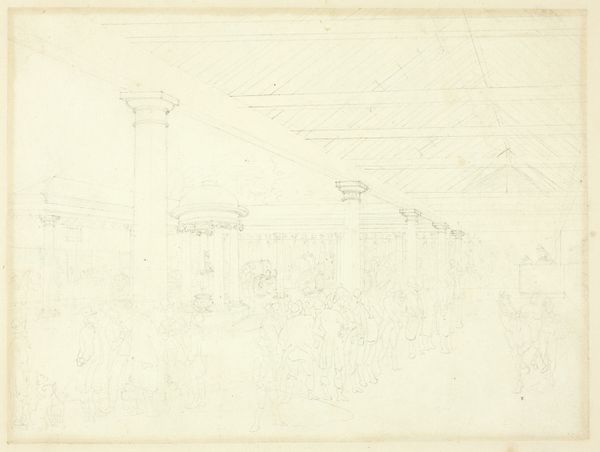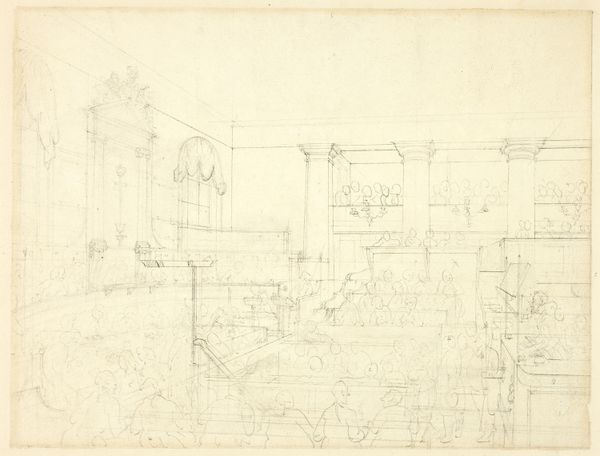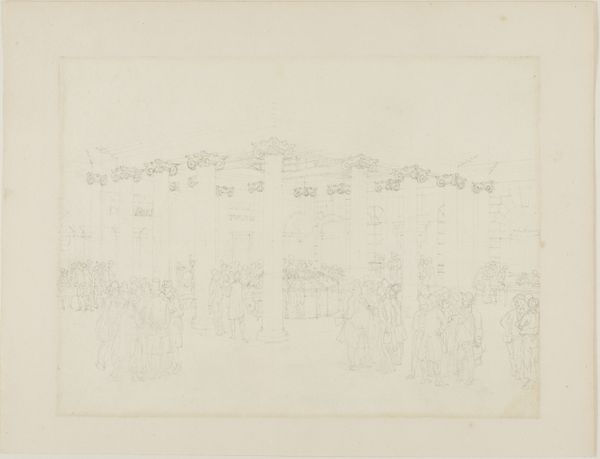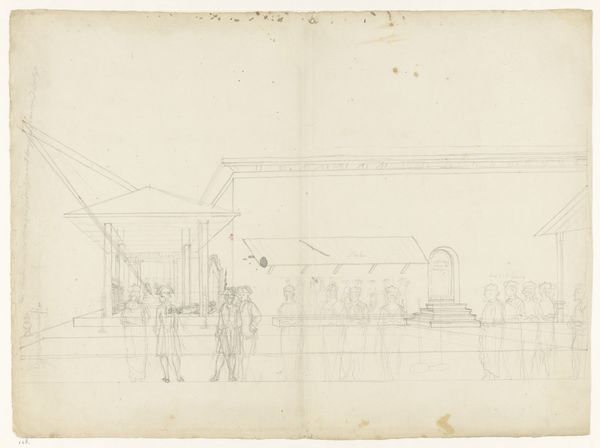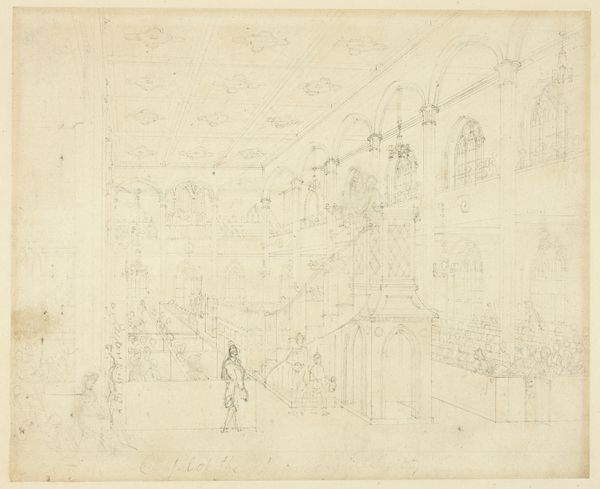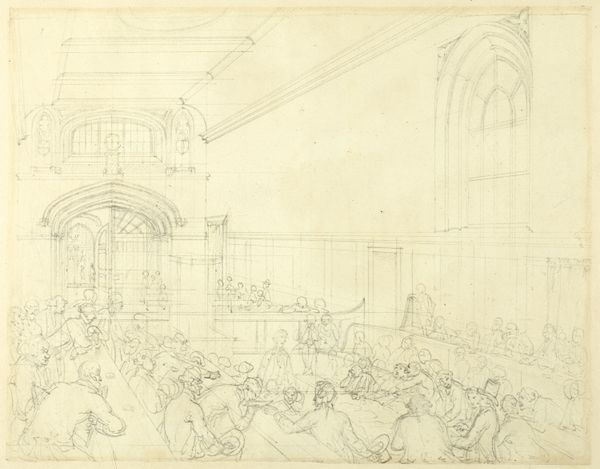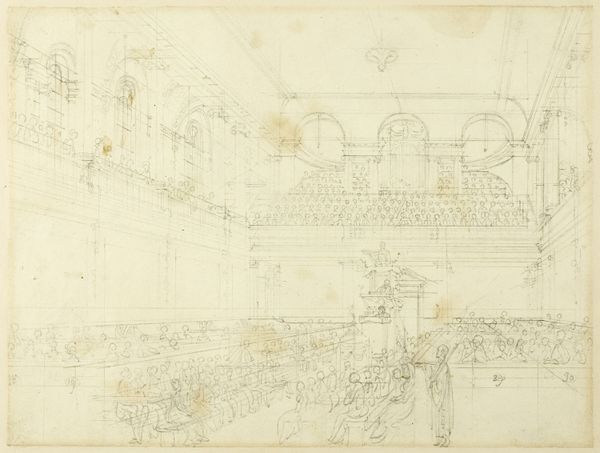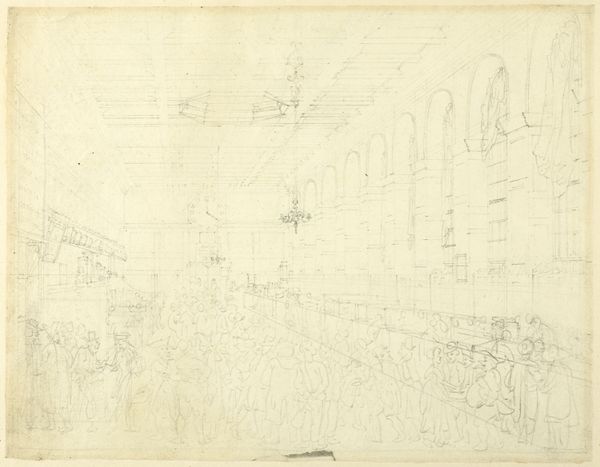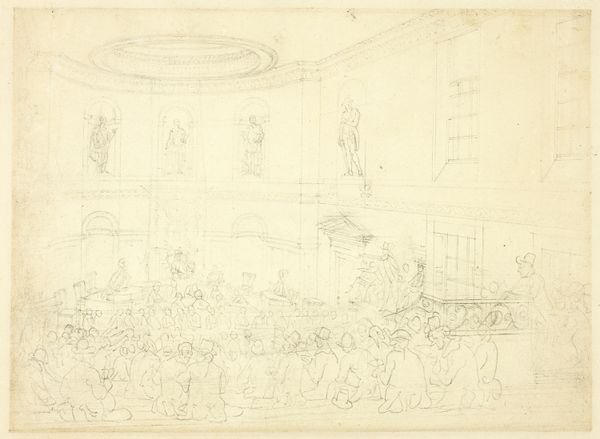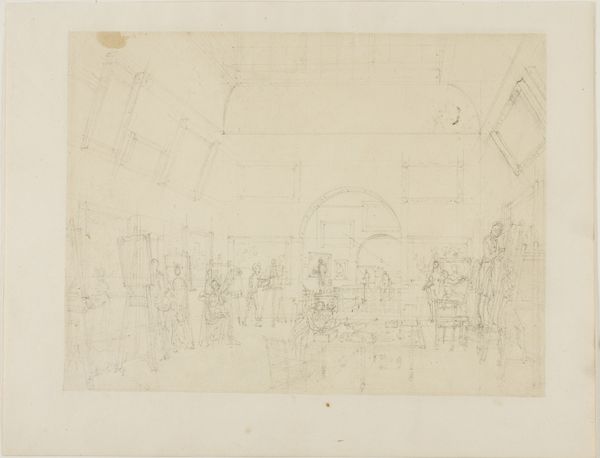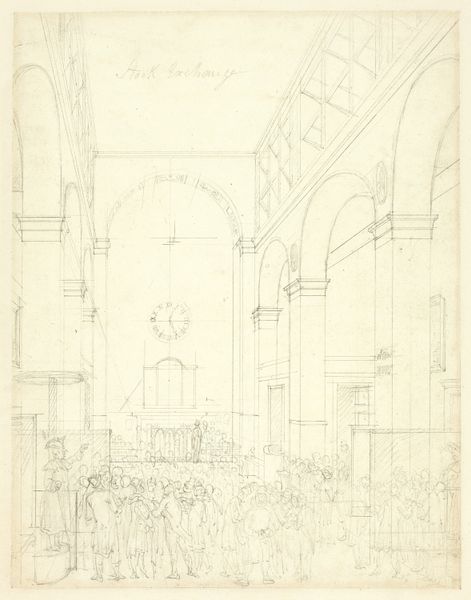
Study for Watch House, St. Mary Le Bone, from Microcosm of London c. 1809
0:00
0:00
drawing, print, paper, graphite
#
drawing
#
narrative-art
#
neoclassicism
# print
#
landscape
#
paper
#
graphite
#
cityscape
#
genre-painting
#
history-painting
#
academic-art
Dimensions: 196 × 263 mm
Copyright: Public Domain
Curator: Right now, we’re looking at Augustus Charles Pugin's “Study for Watch House, St. Mary Le Bone, from Microcosm of London," created around 1809. It's a pencil and graphite drawing, a preparatory sketch really, for a print illustrating London life. Editor: It feels...bleak, even in its spareness. Like a ghost scene, barely sketched in but full of lingering shadows and the suggestion of lives cramped together. All those waiting figures…what are they waiting for? Curator: Well, that's precisely what makes it so compelling. Pugin, while known for his architectural drawings, captured social realities. Watch houses were essentially early police stations or lock-ups. This captures the tension between public order and individual liberty. It’s London laid bare. Editor: Liberty feels like a distant whisper here. I’m struck by the composition; the severe, almost neoclassical architecture of the watch house itself versus the chaotic scrum of humanity huddled outside. It feels deliberate, this visual division. Are those architectural details precisely rendered? Curator: Spot on. He trained as an architectural draughtsman. This level of precision was vital for his practice, so in architectural terms, we see the solid, idealized forms meant to project authority. Remember, the “Microcosm” aimed to present a comprehensive picture of London life – the good, the bad, and the mundane. Editor: So this seemingly simple sketch becomes a commentary on power, social control… even urban anxiety. It’s amazing how much story he tells with so few lines. Makes you wonder about each of them doesn't it. Curator: Indeed, from a historical standpoint, Pugin gives us a snapshot of the city's underbelly, the spaces where law and order intersected with the lives of everyday Londoners. And lets not forget those glimpses into institutional and architectural norms of that time. Editor: So what I initially saw as bleakness transforms into…a layered historical observation. Still a little haunting, but undeniably powerful. Makes me want to know more about the individuals caught in that waiting. Curator: It’s the art of revealing without sensationalizing. That is where Pugin shines I feel. It really prompts one to dig deeper into that particular part of London's story.
Comments
No comments
Be the first to comment and join the conversation on the ultimate creative platform.
